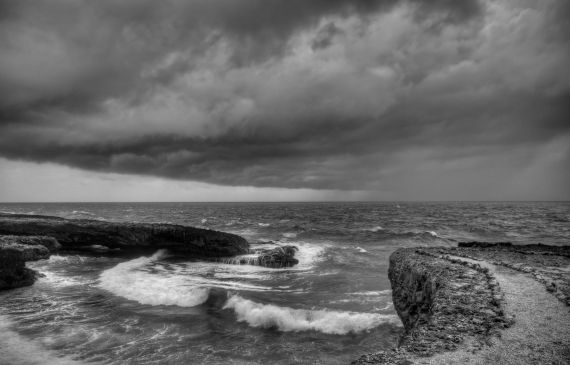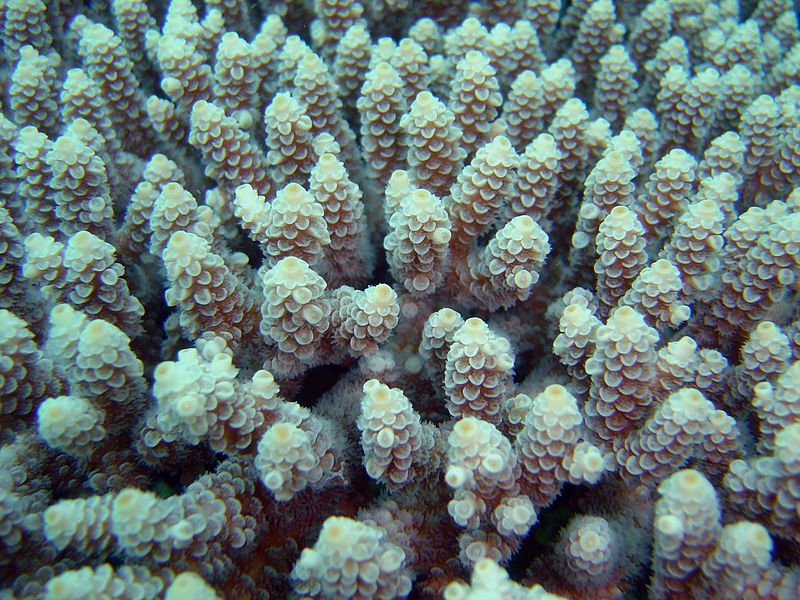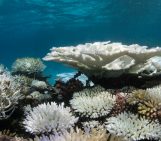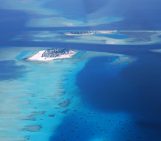Easterly trade winds can carry warm moist air to the island of Curaçao, having picked up moisture while crossing the Atlantic Ocean. Lying just south of the hurricane belt, Curaçao can still suffer the effects of these storms. For the most part, though, the coast has experienced little damage, leading to great preservation of the fossil reefs that fringe its coast.

“Incoming Storm” by Jaap Schellekens, distributed by the EGU under a Creative Commons licence.
The northern coast of Curaçao, which you see in the photo above, is made-up of limestone terraces that have been uplifted since their formation. Each of these terraces is comprised of fossil coral reefs from the Late and Middle Pleistocene, making them approximately 11,000 to 780,000 years old. The uppermost terraces have experienced the most erosion and the lowest terrace, which reaches 10-12 metres above sea level, has been partially eroded, most likely due to storm or hurricane waves. Together with the fossil reefs that make up Curaçao’s coast, the island is surrounded by a live fringing reef, densely populated with different species of Acropora. The reef stretches some 20 to 200 metres offshore, covering a vast 127 km2 in total.

Close-up of an Acropora colony, a reef-building coral. (Credit: David Burdick/NOAA)
Climate change is likely to have a severe impact on the growth of reef-building (scleractinian) corals in the region. Sea surface temperatures are expected to rise worldwide, with the highest rates of change occurring in the Caribbean, south east Asia and eastern Australia, all major coral habitats. The increase in sea surface temperature is likely to result in the bleaching of many corals, especially those that are already living in conditions close to their upper limit of temperature tolerance.
See the Caribbean Marine Biological Institute for more information on Curaçao’s coral reefs and the threats it faces.
References:
Shellman, G. et al. ESR Dating of Coral Reef Terraces on Curac¸ao (Netherlands Antilles) with Estimates of Younger Pleistocene Sea Level Elevations. Journal of Coastal Research, 20, 947-957, 2004
James, M. and Crabbe, C. Climate change, global warming and coral reefs: Modelling the effects of temperature. Computational Biology and Chemistry, 32, 311-314, 2008
Imaggeo is the EGU’s online open access geosciences image repository. All geoscientists (and others) can submit their images to this repository and since it is open access, these photos can be used by scientists for their presentations or publications as well as by the press and public for educational purposes and otherwise. If you submit your images to Imaggeo, you retain full rights of use, since they are licensed and distributed by the EGU under a Creative Commons licence.


